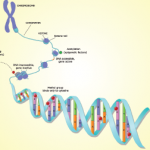The study found a dramatic increase in the expression of peripheral blood miRNA-146a in both the prevention and treatment groups in mice injected with miRNA-146a compared with the mice in the control group, and HE staining showed that the administration of miRNA-146a rendered mice resistant to pristane-induced hemorrhagic pulmonary capillaritis. The prevalence of pulmonary hemorrhage was reduced to 25% in mice in the treatment group, and completely blocked in the prevention group. In the mice in the control group, 56% injected with pristane developed complete pulmonary hemorrhage. In addition, the study found that mice with pulmonary hemorrhage had significantly lower miRNA-146a compared with mice that did not develop hemorrhage (P<0.01), and that miRNA-146a injection substantially suppressed the IFN response and reduced production of multiple proinflammatory cytokines and chemokines.
“Our study provides evidence that miRNA-146a plays a suppressive role in the pristane-induced pulmonary hemorrhage in B6 mice, and highlights a potential pathogenic role of IFN-I pathway activation in the development of pulmonary capillaritis in pristane-induced murine lupus,” said Dr. Shen. “These findings suggest that SLE patients with pulmonary hemorrhage may benefit from therapeutic intervention to induce miRNA-146a expression.”
Overall, Dr. Shen said he is hoping that the results of this study and previous investigation into the role of miRNAs will demonstrate the impressive progress made using miRNA therapeutics in mouse studies. “At an early stage, miRNA-based therapeutics hold enormous promise for reversing inflammatory consequences of disease,” he said, adding that “approaches to enhance or interrupt miRNAs function may have therapeutic utility, as well as revealing molecular and cellular mechanisms responsible for lupus onset and progression.”
Mary Beth Nierengarten is a freelance medical journalist based in St. Paul, Minn.
References
- Shen N, Liang D, Tang Y, et al. MicroRNAs—novel regulators of systemic lupus erythematosus pathogenesis. Nat Rev Rheumatol. 2012;8(12):701–709.
- Tang Y, Luo X, Cui H, et al. MicroRNA-146A contributes to abnormal activation of the type I interferon pathway in human lupus by targeting the key signaling proteins. Arthritis Rheum. 2009;60(4):1065–1075.
- Luo XB, Yang W, Ye D-Q, et al. A functional variant in MicroRNA-146a promoter modulates its expression and confers disease risk for systemic lupus erythematosus. PLoS Genet. 2011;7(6):e1002128. Epub 2011 Jun 30.


